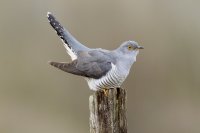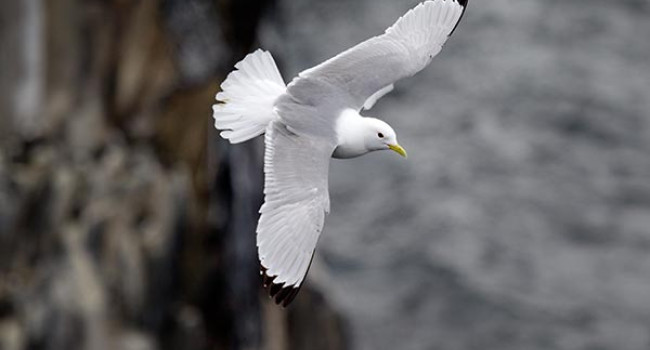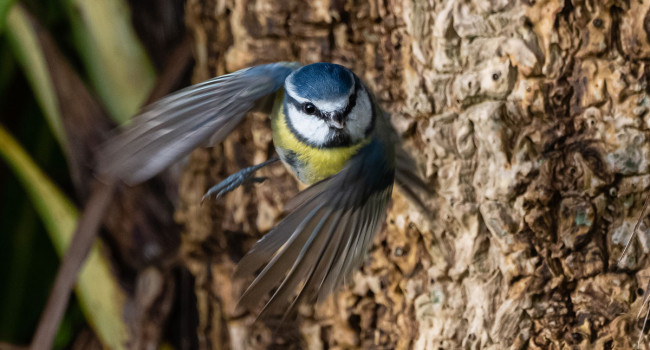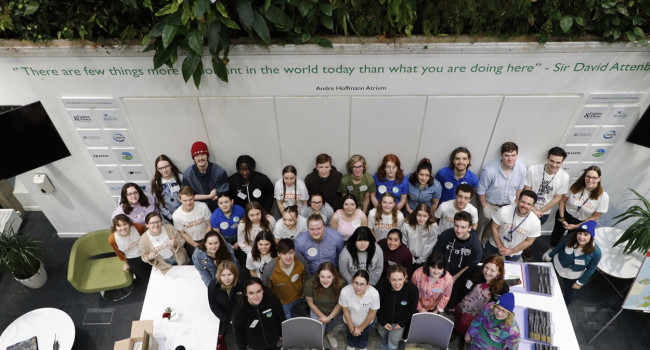Some respite for Britain's birds
01 Jul 2015 | No. 2015-32
Some stay, some go, but 2013 to 2014 was a good year for many of Britain’s birds. The latest results from the Breeding Bird Survey (BBS) brought some short-term, positive news for a suite of both migratory and resident species against a backdrop of long-term declines for many, long-distance migrants in particular.
The possible reasons for these short-term increases vary between species. There is no evidence that the 2013 breeding season was a particularly good one, and for some species it was a poor season, probably related to the fact it was the UK’s coldest spring since 1962.
Lesser Whitethroat (+34%), Whitethroat (+18%), Tree Pipit (+31%), Willow Warbler (+6%) and the familiar Cuckoo (+27%) are among the long-distance species, that travel south of the Sahara for the winter months, to have increased between 2013 and 2014.
The survival of migratory species is thought to be influenced by rainfall levels in the Sahel, just south of the Sahara. This applies for species that spend the winter there, such as Lesser Whitethroat and Whitethroat, and those that use the region as a stop-over site (a place to rest and refuel before continuing further south), such as Tree Pipit, Willow Warbler and Cuckoo. Rainfall levels affect the availability of insect prey on which these species rely. Rainfall in the region during the summer of 2013 was just below the long-term average, so this doesn’t provide a ready explanation for the respite seen in this year’s BBS report, but the three years previous to this included two that were amongst the wettest since the late 1960s, possibly leading to generally better conditions in the area in the winter of 2013/14.
Despite the favourable short-term trends revealed in the BBS report, the long-term trends for many of ‘our’ migratory species are not so positive. Between 1995 and 2013, Cuckoo declined by 46%, Spotted Flycatcher by 47%, Whinchat by 54%, Wood Warbler by 58%, Pied Flycatcher by 60% and, Turtle Dove by 91%, with large decreases also found in several other species.
There are many factors throughout the migration route and on the wintering grounds that could be playing a part in the alarming decline of long-distance migrants. Wetland loss and degradation and the clearance of wooded savannah is likely to be affecting the wintering grounds of long-distance migrants, and the loss of migration stop-over sites, and hunting and trapping along the way, may compound the problem for some species.
The latest BBS results also have good news for ‘partial migrants’, species in which some individuals stay in the UK for the winter, while others venture as far south as North Africa. Increases between 2013 and 2014 were found for Chiffchaff (+21%), Blackcap (+14%) and Meadow Pipit (+14%).
There was good news for resident species too, which remain in the UK for the winter. There were short-term increases for Stonechat (+76%), Kingfisher (+50%), Grey Wagtail (+50%) and Wren (+34%). In general, the mild winter of 2013/14 is thought to have helped the survival of resident species. Residents are susceptible to harsh weather conditions when life gets tough, both in terms of finding food and expending extra energy just to keep warm.
Sarah Harris, BBS Organiser at the British Trust for Ornithology, said “It is refreshing to see some of our resident and migrant birds have had a good year, but this is against a backdrop of long-term declines for many, long-distance migrants in particular. To see Turtle Dove exceed a 90% decline between 1995 and 2013 is very worrying indeed. We cannot thank the dedicated BBS volunteers enough for all their efforts, monitoring our common and widespread birds, their contributions are invaluable.”
Deborah Procter, Senior Monitoring Ecologist at the Joint Nature Conservation Committee, added “Long-term data from the BBS give us a window on to the state of UK biodiversity. The annually updated trends at both UK and country level promote investigation to understand the underlying causes of change in our natural capital assets. Many thanks to the several thousand volunteers who gather the evidence that makes this work possible.”
Dr Mark Eaton, RSPB Principal Conservation Scientist, RSPB Centre for Conservation Science, said: “With their travels crossing continents, migratory birds can be affected by many factors on different stages of their amazing journeys. Finding ways of boosting their populations requires international trust and collaboration. A Turtle Dove in Europe requires the protection of the Birds Directive and when it is in Africa need sufficient habitat to feed to fatten for the return journey to Europe. These birds belong to everyone and everyone along their migration routes needs to play a part in these birds survival.”
Notes for Editors
- Population trends for 110 bird species across the UK have been calculated in the latest BTO/JNCC/RSPB Breeding Bird Survey report using counts made by dedicated volunteer birdwatchers. This is the main scheme for monitoring the population changes of the UK’s common and widespread breeding birds.
- Rainfall on wintering grounds affects population change in many species of Afro-Palaearctic migrants: Ockendon, N., Johnston, A. & Baillie, S.R. 2014. Rainfall on wintering grounds affects population change in many species of Afro-Palaearctic migrants. Journal of Ornithology early view
- In 2014, 3,639 BBS squares were surveyed across the UK by 2,687 dedicated volunteers, to whom we are incredibly grateful.
- The latest report can be found at www.bto.org/volunteer-surveys/bbs/bbs-publications/bbs-reports.
- The Breeding Bird Survey is run by the British Trust for Ornithology (BTO) and is jointly funded by BTO, the Joint Nature Conservation Committee (JNCC) (on behalf of the Council for Nature Conservation and the Countryside, Natural England, Natural Resources Wales and Scottish Natural Heritage), and the Royal Society for the Protection of Birds (RSPB).
- The BTO/JNCC/RSPB Breeding Bird Survey (BBS) is a UK-wide project aimed at keeping track of changes in the breeding populations of widespread bird species. The BBS involves around 2,600 participants who survey more than 3,600 sites across the UK, enabling us to monitor the population changes of over 100 bird species. Knowing to what extent bird populations are increasing or decreasing is fundamental to bird conservation.
- The information provided by the BBS provides a cornerstone for conservation action for birds in the UK.
- This important survey is carried out by volunteer birdwatchers throughout the UK, who receive no financial reward or expenses for their efforts. We are indebted to them for their tremendous support.
- The BTO is the UK's leading bird research charity. A growing membership and up to 60,000 volunteer birdwatchers contribute to the BTO's surveys, collecting information that underpins conservation action in the UK. The BTO maintains a staff of 100 at its offices in Thetford, Stirling, Bangor (Wales) and Bangor (Northern Ireland), who analyse and publicise the results of surveys and projects. The BTO's work is funded by BTO supporters, government, trusts, industry and conservation organisations. www.bto.org
Contact Details
Sarah Harris
(Breeding Bird Survey Organiser)
Office: 01842 750050
(9am to 5.30pm)
Email: sarah.harris [at] bto.org
Viola Ross-Smith
(BTO Science Communications Manager)
Office: 01842 750050
(9am to 5.30pm)
Email: viola.ross-smith [at] bto.org
JNCC Communications Team
Office: 01733 866839
Email: communications [at] jncc.gov.uk
Grahame Madge
(RSPB Conservation/Policy)
Office: 01767 693221
Out of hours: 07702 196902
Email: Grahame.Madge [at] rspb.org.uk
Images are available for use alongside this News Release.
Please contact images [at] bto.org quoting reference 2015-32
The BTO has an ISDN line available for radio interviews.
Please contact us to book an interview
Office: 01842 750050







Share this page